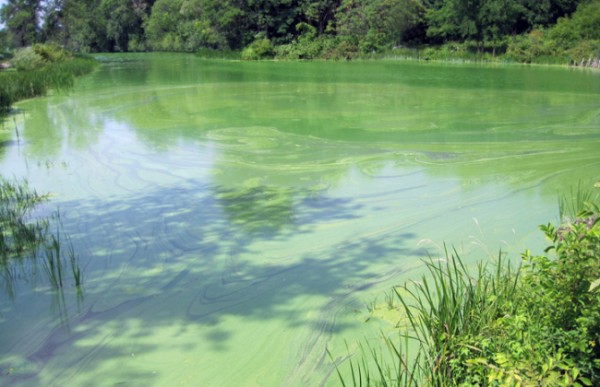Efficient Algae Management in Today’s Regulatory World
By West M. Bishop and Ben Willis. SePRO Research and Technology Campus, SePRO Corporation From the The Western Aquatic Plant Management Society Newsletter, Fall 2013.

As the regulatory scene on pesticides continues to intensify, novel approaches are required to maintain the desired level of algae control while decreasing overall algaecide inputs. The National Pollutant Discharge Elimination System (NPDES) Pesticide General Permit (PGP) declared prevention as a key management action. Additionally, USEPA’s Re-registration Eligibility Decision (RED) for copper instated label mandates requiring a minimum of 14 days between treatments in most waters.
This means solutions are needed to prevent nuisance algae from arising, maintain acceptable algal densities and assemblages, and to increase duration of control following treatment. To fulfill these objectives, an integrated solution is required that addresses the key causative factors of nuisance algae growth as well as enhances the efficiency of algaecides.
As harmful algal bloom frequencies increase, water bodies historically impacted could greatly benefit from a proactive approach. Also, water bodies with nuisance algae infestations need an option to attain rapid control while decreasing rate and amount of re-growth (i.e. select for better algae types and/or lower densities).
So how do we efficiently decrease, and maintain low densities, of harmful algae types that are negatively impacting our aquatic systems? Phosphorus is a common limiting nutrient in freshwater resources, which influences the overall algae biomass and algal assemblage composition. Many cyanobacteria can fix their own nitrogen, utilize multiple forms of carbon, and photosynthesize at low light intensities. Limiting phosphorus availability is an important factor in preventing cyanobacteria dominance. Toxin/taste and odor producing cyanobacteria often prefer low Nitrogen:Phosphorus (N:P) ratio nutrient conditions (i.e. high phosphorus inputs) and require a high demand for phosphorus per unit biomass.
Phosphorus is rampantly being introduced into our surface waters through many sources (i.e. sewage, fertilizer, agricultural runoff, etc.) and historic accumulation can continually fuel nuisance algae blooms (cyanobacteria in particular). Thus, addressing bio-available phosphorus should be a key consideration for an integrated algae management approach.
Recently, the USEPA registered the first and only Algaecide and Water Quality Enhancer (SeClear®, EPA Registration No. 67690-55; NSF certified; patent pending) that address the need for a more multi-dimensional, holistic approach to algae management. This integrated solution provides both effective algaecidal activity (i.e. reactive or curative) and is formulated to remove phosphorus from the system (i.e. proactive or preventative).
Multi-year field site evaluations have consistently shown: 1) efficient copper use (increased algaecidal efficacy and fewer applications) to maintain water bodies below designated action thresholds, 2) decreased nuisance algae re-growth rates following treatment (longer time before a subsequent treatment is triggered), and 3) maintaining low densities of beneficial algae that support the food chain (prevention of harmful algae dominance).
Directly controlling nuisance algae and removing the primary nutrient responsible for re-growth can measure long-term benefits to water quality. With decreased harmful algae densities there is less potential for negative impacts following an algaecide treatment (e.g. dissolved oxygen sag) and less product required at the time of application for desired control.
Also, with lower growth rates of harmful algae, more time between treatments is predicted prior to achieving algal densities that exceed an action threshold and invoke a management decision. Additionally, removing phosphorus with each application and shifting nutrient ratios (e.g. N:P) can select for more beneficial algae types, such as diatoms and green algae, that support desired organisms (e.g. fish) and compete for other resources to suppress rapid recovery of nuisance populations.
With the current mindset of decreasing algaecide inputs (NPDES PGP), decreasing treatment frequency (Copper RED), and increased awareness of a key underlying cause fueling harmful algae blooms (phosphorus); SeClear Algaecide and Water Quality Enhancer provides a more advanced, integrated solution to address algae and water quality management challenges.
To enable comments sign up for a Disqus account and enter your Disqus shortname in the Articulate node settings.